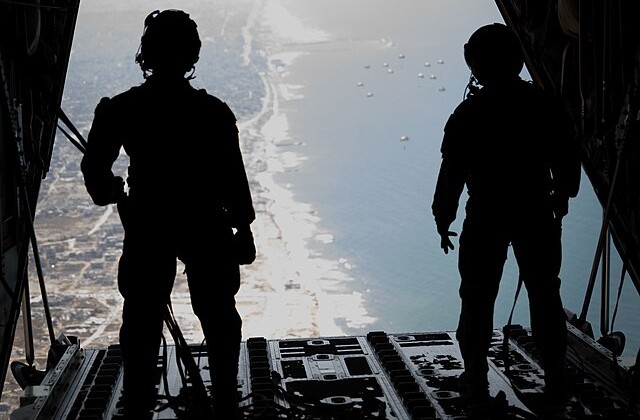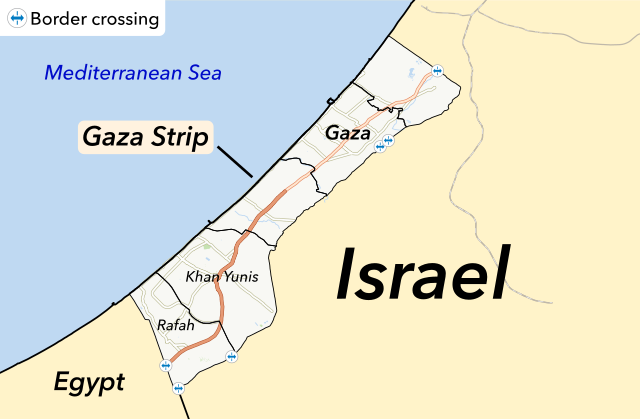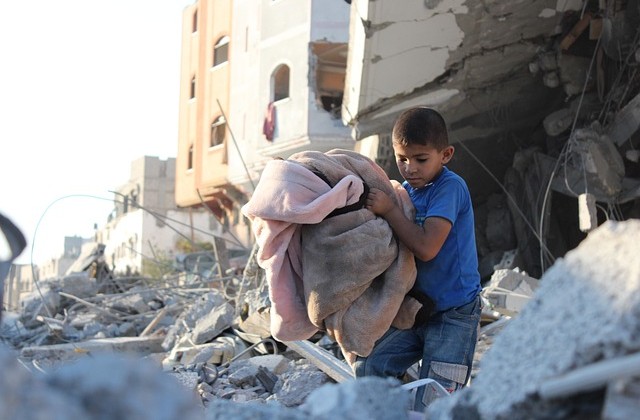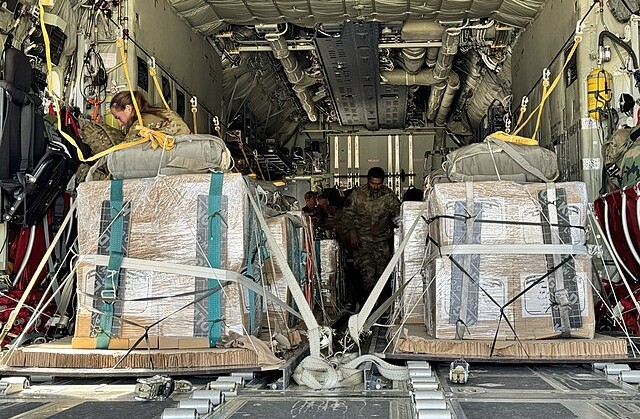
Why A Need For Aid Airdrops In Gaza?
The ongoing war between Israel and Hamas underlies the lack of food for civilians in Gaza. Fighting wreaked massive destruction and disruption of daily life and businesses there, including production and distribution of food. Scarcity of food became worse in March when Israel, the country bordering most of Gaza, cut off entry of aid. It allowed the flow to resume in May but with more restrictions. Israeli officials explained the tightening as necessary to prevent diversion of aid by Hamas. These aid restrictions serve as a pressure tactic to force the Palestinian militant group to negotiate for the release of hostages taken in their October 2023 attack on Israel.
Even when trucks carrying food gain entry to Gaza, results have been disappointing. Desperate Palestinians and armed looters seize them. Further, throngs descend on distribution points with the strongest racing ahead and grabbing provisions such as a sack of flour. Due to the chaos, the Israeli military has fired “warning shots” for crowd control leading to civilian casualties. The U.N. estimates over 1,000 deaths since May at the hands of Israeli forces of people seeking food supplies. Accordingly, humanitarian aid airdrops handled by other nations provide a possible alternative.

Aid Airdrops Meant To Address Starvation In Gaza
According to aid groups, mass hunger exists among Gaza’s 2.2 million residents. The UN reports that two of the three famine thresholds, plummeting food consumption and acute malnutrition, have already been reached. With hunger at catastrophic levels, one-third of Gazans go without food, and almost half a million face famine-like conditions. Infants, children, adolescents, and women are particularly at risk of malnutrition.
Widespread reports point to children dying from hunger-related issues in Gaza. WHO states that 63 deaths from malnutrition occurred in the Gaza Strip in July. Further, the UN’s Palestinian refugee agency indicates that one in five small children in Gaza City are acutely malnourished. Nevertheless, Israeli Prime Minister Benjamin Netanyahu stated on July 27th that “there is no starvation in Gaza.” With Israel turning a blind eye to the situation, other nations seek to help with humanitarian aid airdrops of food in Gaza.

What Are Aid Airdrops?
Airdrops are, as the name implies, supply packages dropped into a targeted area using a plane and a parachute. Humanitarian aid airdrops contain food and essential items with distribution occurring on the ground. Pallets loaded on a plane for an aid airdrops can weigh up to a ton. This method of delivering aid is usually one of last resort, used when obstacles impede getting it to where it needs to go.
Truck delivery of humanitarian aid proves much more efficient and effective than aid airdrops because a plane cannot carry as much cargo as trucks can. Analysts say that an airplane can only deliver one truckload of aid, and Gaza requires 500 truckloads a day. In addition, airdrops can prove dangerous to those on the ground. According to one report, at least one airdrop pallet has landed on tents housing displaced Gazans. The UN condemns aid airdrops in Gaza.
International Aid Airdrops In Gaza
Countries around the world struggle with how to help with the dire situation faced by Gazans. Much attention has been given to ground aid routes, but those routes remain blocked or limited. Accordingly, some countries moved forward to commence aid airdrops.
The US made its first food aid airdrop in Gaza on July 27th. The same day, Jordan carried out three drops for a total of 25 tons in aid. On August 1st, France airdropped 40 tons of food and supplies in the Gaza Strip.
Solutions Beyond Aid Airdrops
While commendable, aid airdrops in Gaza only make a drop in the bucket of the need Gazans have for food and basic supplies. Mass starvation of some two million Israelites wandering in the wilderness in Bible times was averted by heavenly intervention which dropped manna to them. Man’s efforts to solve the Israeli-Hamas war leading to the devastating conditions in Gaza have so far proved unfruitful. Perhaps lifting prayers for peace could provide a heavenly airdrop of peace ending the hostilities.















